How do I connect the hob to the mains?
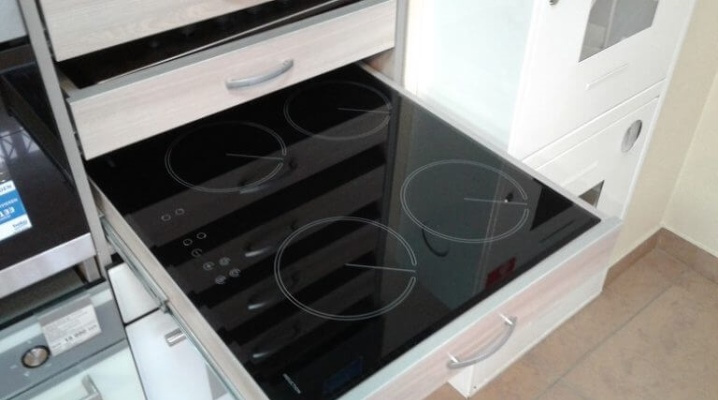
Over the past 20 years, hobs have practically replaced the usual stove from the kitchen. Every man who reads electrical diagrams, knows how to use a tester, puncher, jigsaw, screwdriver, pliers, crimp can independently connect the hob.

Peculiarities
When connecting the electric hob yourself, a number of problems can arise, to solve which will require the skills of performing electrical work and knowledge of the theoretical foundations of electrical engineering.
- The need to lay a separate cable line to connect to the hob network directly (with a socket and a plug or without a socket and without a plug) with a copper or aluminum wire with a cross section of at least 6 mm2. According to the requirements of PTB and PUE, it is strictly forbidden to connect the hob to the same phase with household sockets. In the maximum power mode, the hob draws a current of about 40A, from too much load, the old internal wiring with a cross section of 3 mm2 can become very hot and even ignite. Uneven loading of the phases can also cause interruptions in the supply of electricity due to the operation of the differential circuit breaker.
- The need to connect the body of the hob and the "earth terminal" of the socket to the ground (the body of the cable gland switchboard), while there is no need to equate the concepts of grounding and grounding.
- The need to redesign the input board, installation of a two-pole 40A machine or a residual current device (RCD) and a differential machine for a current of 30 mA (for automatic power outage in case of high voltage breakdown on the case, accidental touch of a person to live elements or short circuit).
- The need to replace a household meter with a more powerful one.
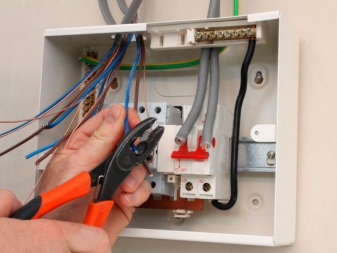



Required materials and tools
Before performing installation work, you must purchase the following materials and tools:
- a screwdriver with a dielectric handle;
- electric cutting pliers;
- combined pliers - crimp;
- cable type VVG or NYM;
- socket and plug for 32A - 40A included;
- PVS-type cable for connecting the hob to an electric plug (if not supplied with the hob);
- differential machine;
- tips NShV;
- terminal block or GML sleeves;
- indicator screwdriver.




A 6 mm2 cable conductor cross-section allows a medium-power hob to be connected to the mains. More precisely, the cross-section of the wire can be calculated using the formula or selected from the PUE table.
If there is no desire to install an additional socket and plug for connecting the hob, the cable coming out of the differential machine can be fed from the input panel without an outlet and plug directly into the induction hob.
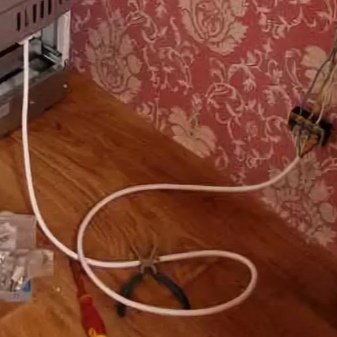
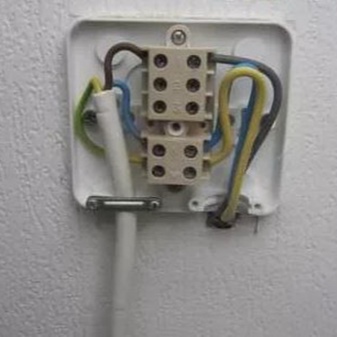
Scheme
The main task of the specialist performing the connection is to supply voltage to the hob or to the contact tabs of the power socket through the protective equipment (RCD and differential circuit breaker) with a separate cable designed for a current of at least 40A. The hob or the socket for it, according to the requirements of the PUE, is connected to the input panel with a separate cable. When all the hob burners are switched on at full power at the same time, the current consumption reaches 40A.To prevent the heating of the wires of the internal wiring to a dangerous temperature and fire the insulation, it is strictly forbidden to connect the hob in one line with installed household sockets or other built-in appliances.

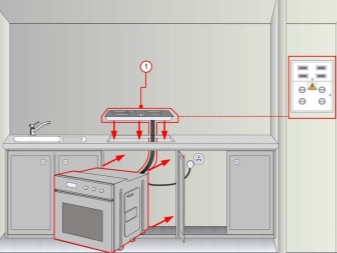
In accordance with the requirements of PTB and PUE, for protection against electric shock (in case of a short circuit in the equipment or in case of accidental touching with hands to live current-carrying elements), devices are installed on the terminal board that limit the maximum current consumption and turn off the power when a leakage current appears (according to due to a person touching live elements under voltage). To protect against high-frequency induction pickups, the hob body and socket petals marked "ground" must be connected to the grounding bus (the case of the distribution board of the distribution board).
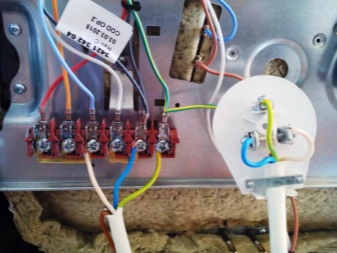
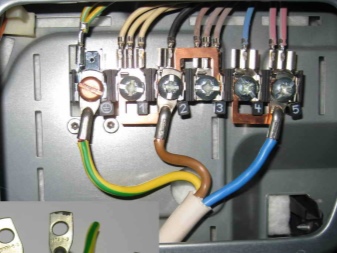
When studying the technology of self-connecting an induction hob to a three-phase AC network and during electrical work the meaning of the following terms should be clearly distinguished:
- protective grounding (connection of the device body to the grounding wire);
- protective grounding (connection of individual points of the electrical circuit with the middle terminal of the transformer winding of a three-phase AC network);
- logical zero - voltage at the positive terminal of the DC source (for powering transistors and microcircuits).



Substitution of concepts as a result of manipulation in this case will most likely lead to serious errors during electrical work, damage to internal wiring from overheating, fire cables, failure of an expensive hob, or electric shock to users.
To connect a separate line from the terminal board to the hob, do the following:
- replace the electric meter with a new one with an operating current of at least 40A;
- install a two-pole circuit breaker for a current of up to 40A (to protect the network from a short circuit inside the hob and excessive current in the load circuit);
- set the differential circuit breaker for a current of up to 30 milliamperes (to disconnect if you accidentally touch your hands to live parts under voltage).



The hob can be connected to a 220V or 380V network in a single-phase or three-phase circuit. It depends on how many phases are supplied to the apartment from the switchboard.
It is not easy enough to connect the 4 wires to the hob. The big problem is that many Electrolux and Zanussi hob models come with a pre-installed four-wire power cord. The socket for connecting the power cord to the hob is located inside the device. To replace the cord with a standard one, it is necessary to disassemble the hob by tearing off the self-adhesive labels with the inscription "QC" from the fastening screws. After tearing off the labels, the hob is removed from the warranty service. For this reason, before partial disassembly of the panel to replace the cord, it is necessary to weigh the pros and cons well, given the impossibility of free repair during the warranty period at the service center.


If you decide to replace the cord yourself, you must do the following:
- open the plastic cover of the cable box at the back of the panel by lightly pressing the plastic clips with a screwdriver;
- we combine two phase wires L1 and L2 by slipping a jumper under the bolts;
- when connecting the plug, we use only the brown wire, and put on a heat-shrinkable tube on the black one.


Connection process
Anyone with basic electrical installation skills can connect a modern hob to a 220V power supply. All work under voltage is performed only with dielectric gloves, standing on a rubber mat in shoes with leather (rubber) soles. You cannot perform work when a person is at home alone. In case of electric shock, the second person will be able to de-energize the network, provide first aid or call an ambulance. When performing installation work related to the modernization of a 220V household electrical network, it must be remembered that not only the successful completion of work, but also health and even life depends on strict observance of safety rules and PUE.


Performing any work under tension is strictly prohibited after a night shift, a trip to the country house, with severe fatigue, in a state of strong excitement or intoxication.
A life-threatening high voltage of 4000V is present on the working hob magnetron. Approaching a working magnetron closer than 50 centimeters or checking its performance "for a spark" with a pencil or finger is life-threatening. The hob connection begins with the installation of a special three-pin (for single-phase connection) or five-pin (for three-phase connection) electrical outlet and plug. The socket is attached to the surface with screws. When installing the socket on a wooden surface, a special gasket made of fire-resistant material must be placed under it. Do not install a socket in the immediate vicinity of a sink, as water splashes from the faucet can accidentally enter the electrical contacts.

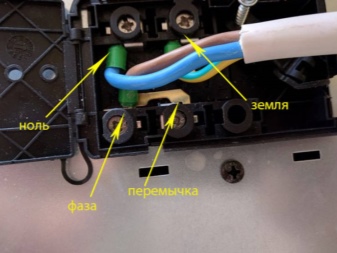
Having completed the connection of the phase and neutral wires, it is necessary to connect the earth bus (switchboard housing) to the side lamellas of the socket. It is strictly forbidden to use the induction hob without a ground connection, as this may result in electric shock. Let's consider the process of connecting an induction hob to the electrical network step by step:
- we purchase an electrical cable of the required length that connects the plug to the induction hob;
- remove the cover from the power compartment by unscrewing the screw with a screwdriver;
- we connect the power cord to the plug, paying attention to the connection of the grounding conductor (yellow-green);
- remove the protective plate covering the contacts;
- we connect the cord from the plug to the panel power block, observing the color of the insulation (blue and brown are the phase and zero, yellow and green are the ground), put a jumper between the phase terminals and firmly clamp it with bolts;
- tighten the cable terminals on the power block;
- we check the installation and turn on the panel using the touch buttons or by touching the touchscreen of the service display.




When connecting the protective relay and the differential circuit breaker, it is necessary to observe the correct polarity (according to the marking of the terminals of the devices and the color of the wires). When screwing the terminals in the connectors, do not use excessive force, this can lead to breakage of the thread or destruction of the contact. The standard types of phase wiring in an apartment are single-phase and three-phase circuits. The two-phase scheme is quite rare and for this reason it raises the largest number of questions. If the internal wiring in the apartment is made in 4 wires, then when connecting, you need to connect the corresponding colors. Black and brown - phase 0 and phase 1, blue - neutral wire, yellow and green - ground bus.

If there are 6 terminals on the block of the cooking oven, and in the cord for connecting 5 wires, then this is a rather complicated option - a two-phase connection. In this case, when connecting the wires, the zero is at the top, the ground is at the bottom, and the phases are in the middle.
The most common (standard) option is a three-phase connection. The zero wire must be connected at the top, the ground - at the bottom, the phases - in the middle. The symmetrical arrangement of flowers is repeated in the rosette.If the socket for connecting an induction hob is designed for 4 wires, then one contact (any) is not used either on the power strip or in the outlet. With a single-phase connection, the following actions are performed:
- three phase wires (L1, L2, L3) are connected together;
- two neutral wires (N1, N2) are connected together;
- the green wire connects to the ground bus.

Two-phase connection is a kind of single-phase with one difference: contact jumpers are used for correct phase splitting. The jumper settings are shown on the back of the cable box. With careful and thoughtful performance of the work, there is nothing complicated in the case of a two-phase connection.
Potential problems and professional advice
The most common mistake when connecting yourself is the wrong position of the phase jumpers or their absence. In the event of this error, only two of the four burners will work (single-phase switching on a three-phase device). One of the most common causes of damage to the hob and internal wiring is the late actuation of protective devices when the permissible current is exceeded due to an overload or short circuit. According to statistics, the protection response time specified by the PUE is not always maintained at 0.4 seconds. This is most often the result of the use of cheap, non-licensed residual current circuit breakers and differential circuit breakers made in China. It is especially dangerous to buy RCDs and differential machines from random people.
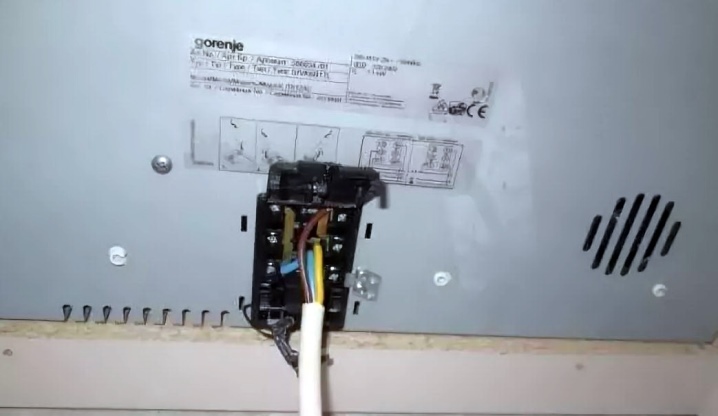
It must be remembered that not only the trouble-free operation of the hob depends on the reliable operation of the protective equipment, the life of the owner depends on it.
In case of "phase imbalance" as a result of uneven load on the neutral wire, a voltage of up to 110V may appear with respect to the ground potential. For this reason, in order to reliably turn off the hob in the event of an abnormal situation, it is necessary to install a two-pole automatic device recommended by the manufacturer (when triggered, it breaks both the phase and neutral wires).
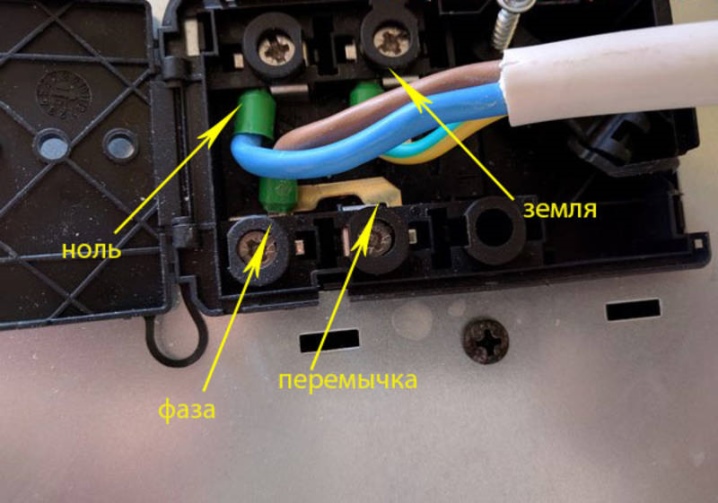
Due to the incorrect operation of the protective network equipment, in the event of a short circuit in the hob, in the power cable or in the socket, the internal wiring is often damaged or the hob itself fails. Protective circuit breakers of the old type (thermal) do not provide the required response time (speed). In accordance with the requirements of the PUE, to connect induction hobs, it is recommended to use RCDs and differential machines (differential relays) with the following parameters:
- for connection to a single-phase network: a 32A circuit breaker or a 40A RCD and a 30mA differential circuit breaker;
- for connection to a three-phase network: a 16A circuit breaker or a 25A RCD and a 30mA differential circuit breaker.


The next reason for the malfunction is a broken connection in the electrical outlet (between the pins of the power plug and the contact strips).
If the connection is broken, a spark or an electric arc occurs in the outlet, which leads to severe heating. To avoid these situations, when planning the location for installing the outlet, the following points must be considered:
- the contact lamellas of the socket must reliably contact the pins of the electrical plug;
- the number of contacts in the socket must be at least the number of cores on the wire;
- after installation, the socket must be securely fastened;
- the socket must be installed on a non-combustible surface, if this requirement cannot be met, an asbestos layer or a special gasket made of non-combustible material is placed under the socket;
- do not install sockets next to washstands so that when washing hands they do not get splashed with water;
- after the installation is completed, before turning on the hob for the first time, the wiring of the cable from the terminal board to the outlet must be ringed with a tester.

If a malfunction occurs after switching on or during operation, an engineering code is displayed on the screen of the service processor and an emergency buzzer sounds. If you repeatedly issue the code, you must contact the service center by phone. Delay threatens the spread of the malfunction to other units and did, which can dramatically increase the amount of work and the cost of repairs. Never buy the hob or accessories from random people.

In addition to purchasing an incomplete product for very big money, in this situation, at best, you can get an incomplete model (without fasteners, cords, screws and screws), a contraband product without an official warranty card, or a well-disguised BU hob that was repaired in artisanal conditions. Without an officially issued coupon with a stamp of the date of sale and a stamp of the store, the service center does not perform free warranty repairs.

For information on how to properly connect the hob to the mains, see the following video.













The comment was sent successfully.